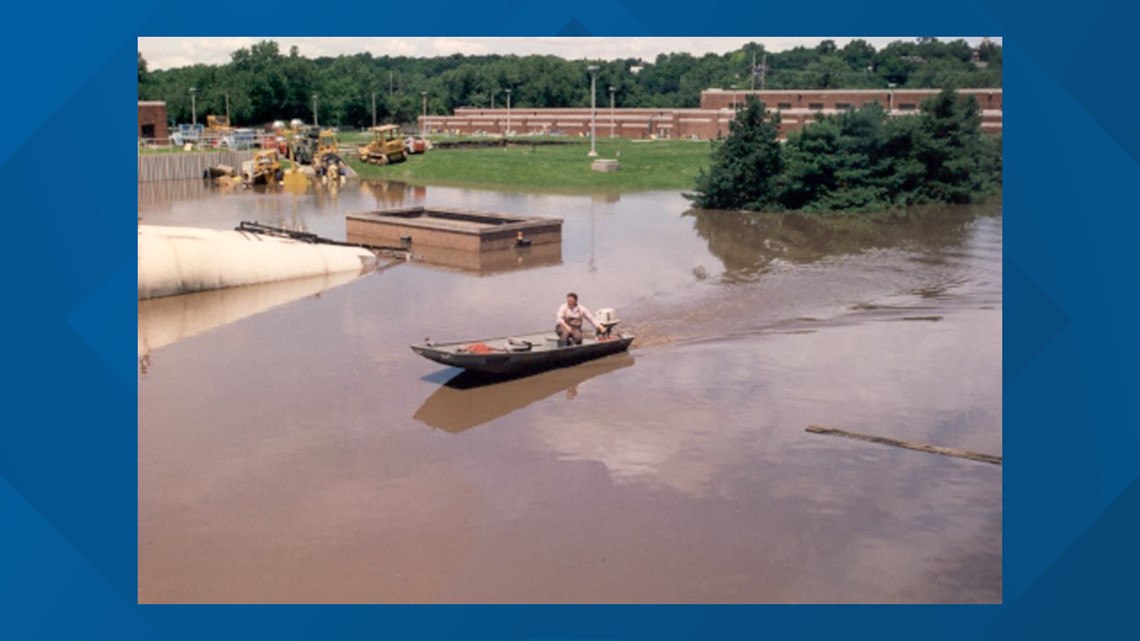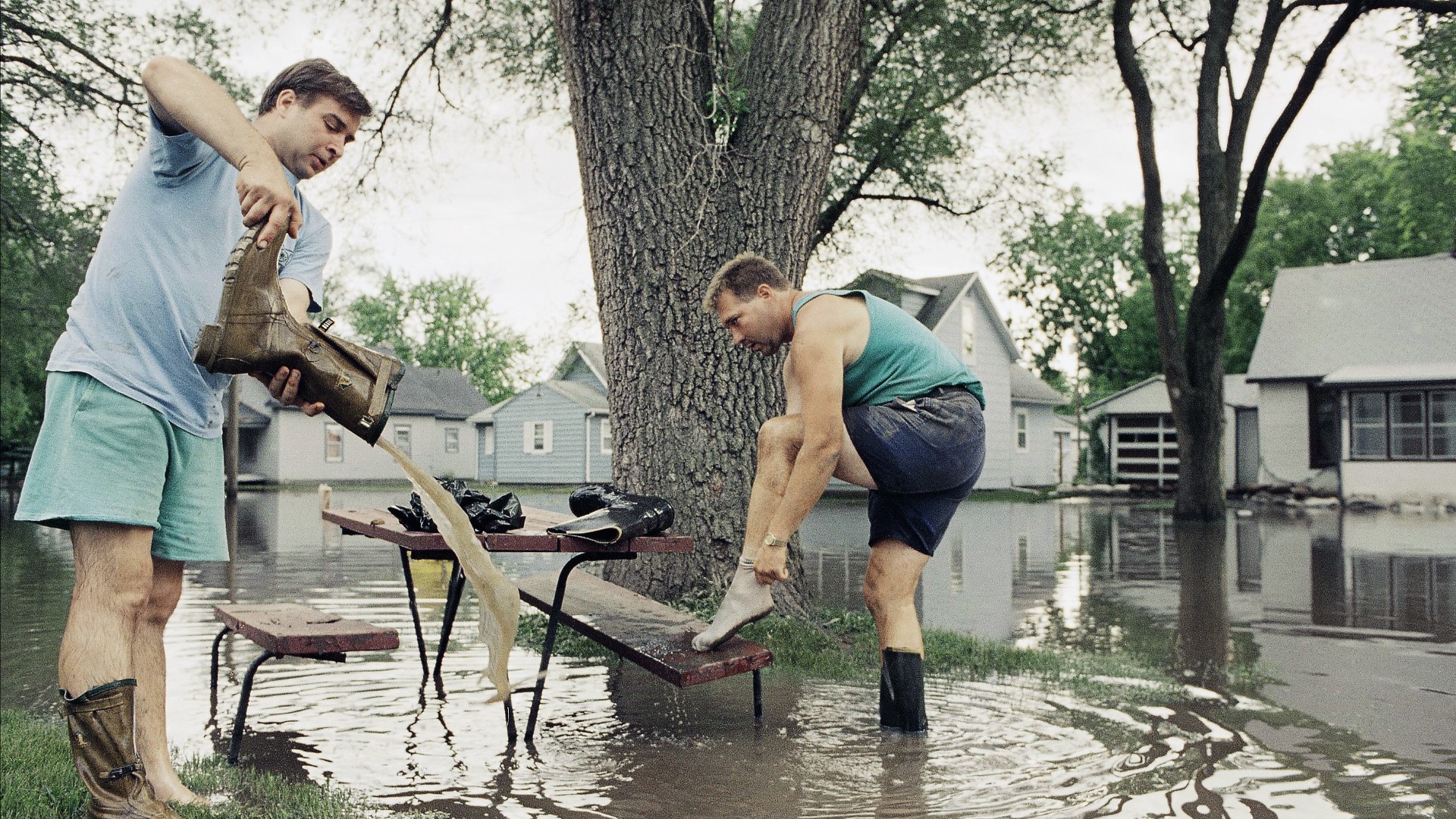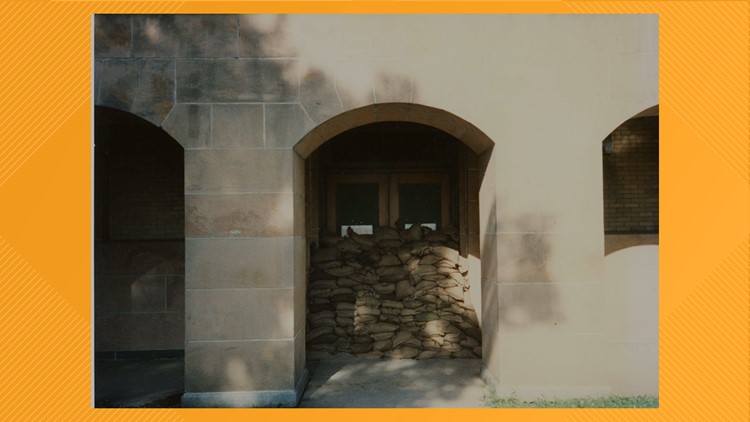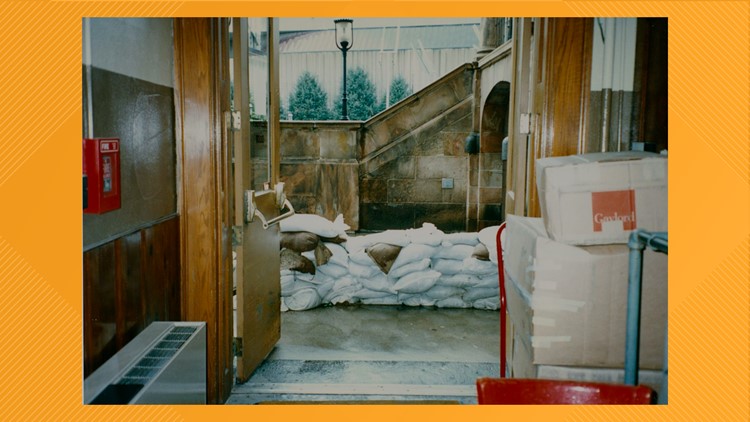DES MOINES, Iowa — "It was raining every day ... and not just a little bit of rain, but monsoons worth of rain."
The memories are still so clear for Des Moines native Cynthia Martin as she reflects on the days leading up to one of the biggest disasters in city history.
"Anytime I hear thunder now, anytime there's a lot of rain, I start thinking, 'well I wonder if we're going to get back to that problem again,'" Martin said.
According to the National Weather Service in Davenport, "uniquely extreme weather and hydrologic conditions led to the flood of 1993."
Unusually wet weather in the fall of 1992 led to above-normal soil moisture and reservoir levels for both the Upper Mississippi and Missouri River basins.
Above-average rainfall fell in the Midwest during the spring and summer of '93, leading to some level of flooding conditions in at least nine states for more than half the year.
"It was just a mess," Martin said. "The kind of mess you can't imagine until you've lived through it."
In central Iowa and metro Des Moines, the most severe conditions unfolded in early July.
More than a half a foot of rain fell in the region around July 8, 1993, causing the Raccoon River to reach levels of 23 feet by the following weekend.
On July 9, 1993, Des Moines Water Works decided to close the levee at Water Works Park as the river reached unprecedented levels.


The Raccoon River crested at 26.8 feet on the morning of Sunday, July 11, 1993, and inundated the Des Moines Water Works treatment plant.
The treatment plant had been completely shut off just a few hours before the water entered the plant, but the flooding caused the plant to fail, leaving city businesses and residents without any running water.
Seven days passed before water was flowing back into Des Moines homes, but the water wasn't deemed sanitary for use until Thursday, July 22, 1993, twelve days after residents originally lost water.
Water was declared safe to drink on Friday, July 30, 1993, a total of nineteen days later.
"We'd experienced flooding before, but the flooding in 1993 was seven feet higher than the historic high crest on the Raccoon River- two feet higher than our levee system at that time," said Ted Corrigan, CEO & General Manager of Des Moines Water Works.
"We were literally in here with boats floating around trying to see what had survived and what hadn't," Corrigan said.
Although the failure of Des Moines Water Works is perhaps the most memorable story from the 1993 flooding, countless areas of central Iowa faced impacts.
Richard Nordin, a long-time employee of the Des Moines Public Library, recalls the last-minute efforts to save books from the library's old downtown building.
"They took all the books out of the lower level of the library and handed them up a stairwell," Nordin said.
Des Moines Public Library Flooding, July 1993
"You know, you don't want to over-glamorize things, but it was a time where, you know, Iowans act generally in their best behavior and try to help each other out," said Leo Landis, State Curator for the State Historical Society of Iowa.
It took central Iowa months to fully recover from the flooding.
Des Moines Water Works re-evaluated their facility and operations for years after flooding.
They installed flood gates in 1994, which close any time the expected river level is higher than 17 feet.
Two additional treatment plans were also constructed.
"If there were a flood of the same magnitude, we're ready," Corrigan said.
The National Weather Service says major flooding occurred across North Dakota, South Dakota, Nebraska, Kansas, Minnesota, Iowa, Missouri, Wisconsin and Illinois between May and September of 1993.
50 deaths were reported in the region. Damages from the flooding approached $15 billion.
The Raccoon River has neared '93 flooding stage one other time, in the summer of 2008, when it crested at 24.66 feet on June 13th.



























